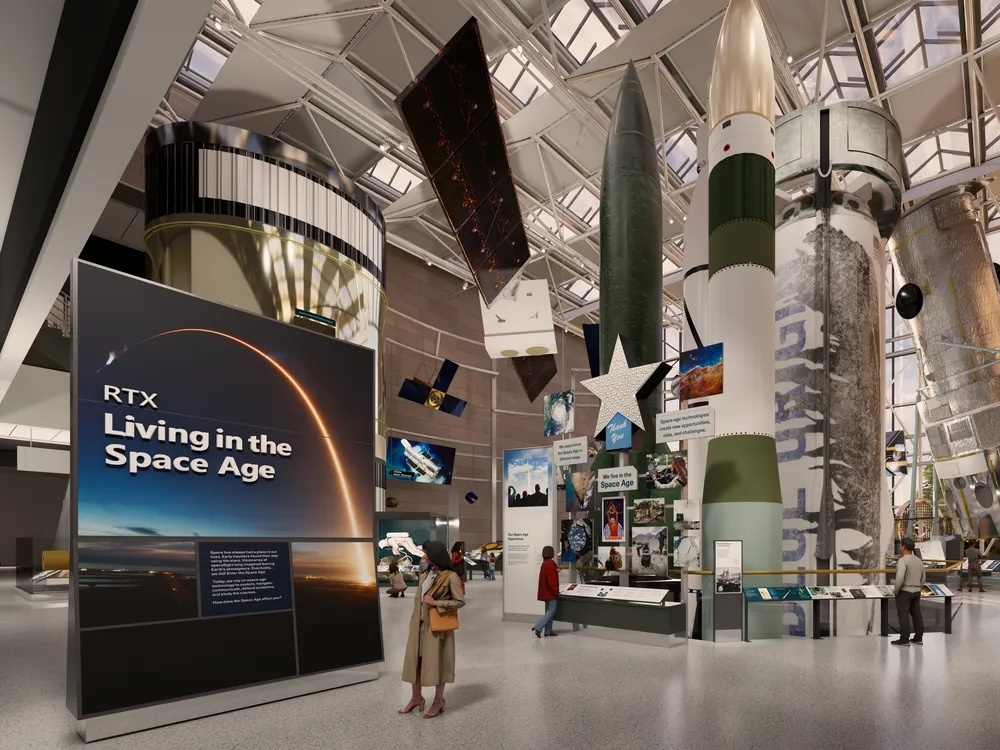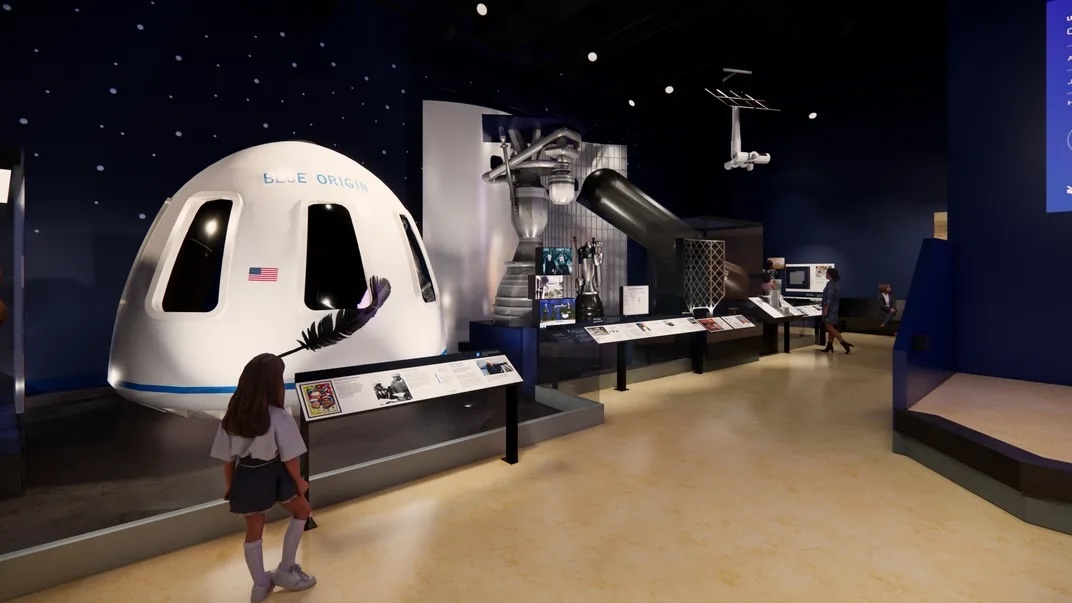17.10.2024
The two artifacts donated by Blue Origin achieved record-breaking feats and will extend the museum’s story of trailblazing space travel into the present

A rendering of the upcoming RTX Living in the Space Age Hall at Smithsonian's Air and Space Museum, featuring the New Shepard rocket booster. National Air and Space Museum
The Smithsonian’s National Air and Space Museum is set to display two new artifacts donated by Blue Origin, the aerospace company founded by billionaire Jeff Bezos. The objects—the New Shepard rocket booster and the RSS (Reusable Space Ship) First Step crew capsule—have been key to missions in the new space age.
In an age of private space companies racing for new firsts, these artifacts represent recent trailblazing efforts in space history. Both will be displayed in reimagined galleries at the museum that are slated to open in 2026, after renovations.
“There is no better final landing pad for New Shepard than the Smithsonian,” Bezos says in a statement shared with Smithsonian magazine. “We are honored and grateful.”
Named after Alan Shepard, the first American astronaut to go to space, the New Shepardrocket booster made history in 2015 as the first launch vehicle to achieve a soft, vertical landing after traveling beyond Earth’s atmosphere—allowing it to be fully reusable.
Colleen Anderson, curator of the post-1945 rockets and missiles collection at the Air and Space Museum, tells Smithsonian magazine that launch vehicles such as rocket boosters have historically been single-use, including those in NASA’s Apollo, Mercury and Gemini programs.
The 39-foot-long and nearly 36-ton reusable New Shepard rocket booster, known as Propulsion Module 4-2, will be displayed in the museum’s RTX Living in the Space Age Hall. The forthcoming exhibition will explore the space age from the mid-20th century to now, displaying the development of rocket technology over time.
“Rockets are the place where this all starts—that’s how we get to space in the first place,” Anderson says. “They’re both in the physical center, but also the thematic center of this exhibit. So, for instance, we have a full-scale Juno 1 rocket, which launched Explorer 1, the first U.S. satellite. And if we put New Shepard next to it in the gallery, this allows us to extend the story of launch vehicles to the present.”
The second artifact, the SUV-sized RSS First Step crew capsule was involved in Blue Origin’s first successful human flight to space on July 20, 2021. The mission carried four passengers, including Bezos, on a roughly 11-minute flight past the Kármán line, the boundary between space and Earth’s atmosphere.
Designed to fit six passengers, the capsule was instrumental in breaking four Guinness world records on that first mission, enabling the oldest, youngest and first siblings to go to space, along with being the first suborbital spacecraft to carry paying customers.

A rendering of the upcoming Futures in Space gallery shows what the RSS First Step crew capsule will look like on display. A mockup of the capsule will go on view until the actual one, which is still in use, gets decommissioned. National Air and Space Museum
RSS First Step is still in active use, but upon its decommission, it will be displayed in the museum’s Futures in Space gallery. Until then, a full-scale mockup will be viewable in the exhibition. The Futures in Space gallery delves into the new opportunities that arise as space technology advances, looking at innovations that generate accessibility for commercial and tourist spaceflight. Since the Cold War, space travel has evolved from the domain of governments to within reach of private companies and even somecitizens.
Emily Margolis, curator of contemporary spaceflight at the National Air and Space Museum, tells Smithsonian magazine the RSS First step is important as a vehicle for creating new pathways to space and realizing a dream of private spaceflight “that many people have shared for a very long time.”
“I’m really excited about this object in particular, because RSS First Step has enabled 43 new astronauts to go into space over the period of three years,” Margolis adds. “And that’s a really big deal for those 43 people who might not have had pathways to space otherwise.”
